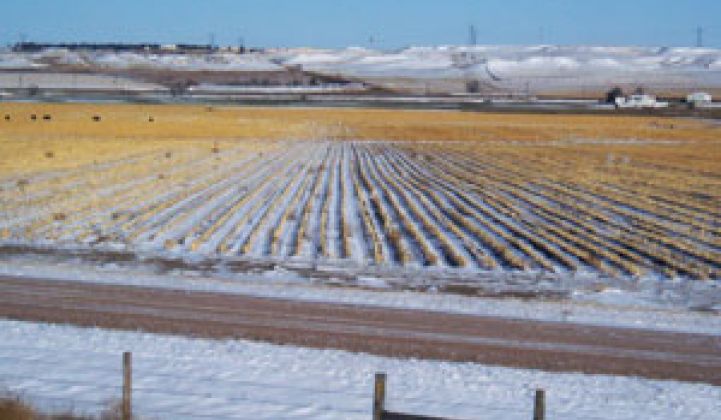It's not just the large power companies that are keen on adding new transmission lines to ferry renewable energy to cities and suburbs. Rural utilities also are looking for money to upgrade their local grids, and the U.S. Department of Agriculture is there to help.
The USDA said Friday it has awarded $356 million in loans to 16 rural utilities and cooperatives in 10 states for adding or fixing 3,830 miles of transmission and distribution lines. All together, the projects would benefit 45,000 customers.
The Western Farmers Electric Cooperative will receive the largest loan. The co-op, based in Andarko, Okla. but serves customers in Kansas and Texas as well, plans to use the $103.3 million to build 120 miles of new lines, three switching stations and 10 substations. It also wants to upgrade 38 existing substations and switching stations.
The cooperative said last month it had begun getting electricity from a 19-megawatt wind farm developed by the Edison Mission Group, part of Edison International (NYSE: EIX). The cooperative said it is looking at adding another 100 megawatts to 200 megawatts of wind energy to its supply.
Other USDA loan recipients included the Victory Electric Cooperative Association in Dodge City, Kan., the Central Alabama Electric Cooperative in Prattville, Ala., and the Piedmont Electric Membership Cooperative in Hillsborough, N.C.
Many renewable energy advocates have called for boosting the country's electric grid, given the growing demand for electricity, particularly from renewable sources such as sun and wind (see Al Gore Sets Energy Goal and National Grid: Dream or Reality?).
And many of the large solar and wind farms are located far from metropolitan areas, prompting power companies to spend billions to expand their transmission capacities (see California OKs Controversial Transmission Project).
Last week, Texas regulators approved $5 billion worth of transmission projects to a dozen power companies. Texas, the country's largest wind energy producer, has experienced severe grid congestion because its transmission isn't adequate in accommodating the growth of wind energy generation.
Wind farm operators from western Texas have paid the grid operator to take power they produce in order to take advantage of a lucrative federal production tax credit (see Texas Wind Farms Paying People to Take Power).



